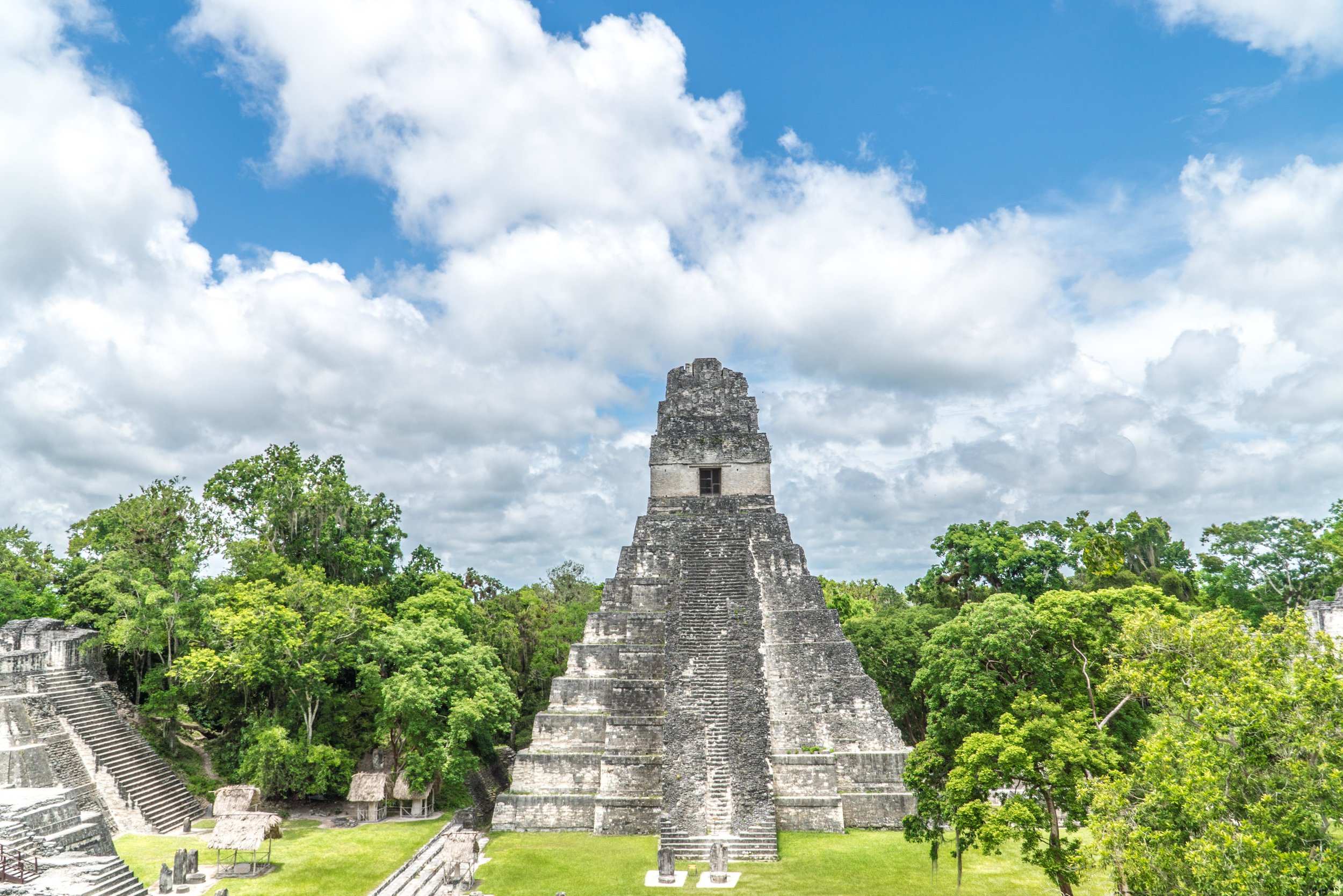Visiting Guatemala’s Oldest National Park, Tikal National Park
For as long as I can remember I’ve been fascinated by the Mayans, and had a keen interest in visiting Central America’s ruins. Perhaps it’s due to my father, who was a longtime world history teacher, or perhaps the enchantment that seems to surround many of Central America’s Mayan ruins. But while I’ve been fortunate to visit a lot of Central America, it was only last week when I had the chance to visit my first Mayan ruins, in Guatemala. And it seemed particularly fitting that my first experience with Mayan culture would be at Guatemala’s Tikal National Park, one of the most powerful kingdoms and largest archaeological sites of the Mayans.
My day at Tikal National Park fittingly began by waking up in the jungle, where my accommodations were situated on the far side of Lago Peten Itza at Bolontiku Hotel. From here, it was a 15-minute boat ride to Flores (the main city that I flew into on Avianca), where I met my guide Henry for the hour-long drive to the entrance of Tikal.
Sunrise from Bolontiku Hotel
Henry started telling me about the history of Tikal, which dates back thousands of years. Thousands! While settlement is believed to have been more than 2,000 years ago, it’s held that the height of civilization in Tikal was approximately 250 to 900 A.D. At peak population, Tikal is believed to have had a population of more than 100,000 people, and tens of thousands of structures.
Just before arriving to the entrance of Tikal we stopped at a small souvenir shop and restaurant, where the story of Tikal gets more interesting. Before tourists began visiting this region of Guatemala to visit Tikal, the region was actually important for the production of chewing gum. That's because the major export of this region for years was chicle, the milky juice that comes from the sapodilla tree, and which was used in chewing gum for years before synthetics were introduced. In fact, it was actually a gum-sapper (or chiclero), Ambrosio Tut, who rediscovered Tikal in the mid-1800s. You can even to this day see marks on some of the trees in Tikal from gum-sappers many decades ago.
But what visitors are likely to notice upon first entering the national park, like I did, is the biodiversity of Tikal. That's because Tikal is part of the Maya Biosphere Reserve, which represents one of the largest areas of tropical forest north of the Amazon. Within minutes of entering the national park it felt as if we were deep in the jungle, as dense forest flanked both sides of the two-lane road through the national park. Above us, spider monkeys swung from trees above the road, while other animals were frequently crossing the road, such as coatimundi and wild turkeys.
Minutes later we parked, and after signing in at the entrance, we were walking through the forest toward the first ruins. What was perhaps most extraordinary is that for about the first half-mile, we were continuously passing by ruins, but which hadn’t been excavated, and were hidden behind thick forest or below mounds of earth. The first ruins we stopped at looked like nothing more than a few tall stone steps along the path. But after ascending those steps to the plateau, we were greeted with ruins that stretched back 50 to 75 yards, and that rose 3-4 stories above us. Henry shared with me that the structure was originally a mansion, which would’ve had several hundred rooms inside. My mind was blown.
However, if you’ve ever seen a photo of Tikal, it’s probably of the Great Plaza. Tikal’s Great Plaza is essentially the center of Tikal, and the headliner for visitors, but also the center of life in Tikal so many centuries ago. Here, visitors will find temples I and II, as well as ball courts and other stone structures rising out of the ground. The can’t-miss photo opp is actually from Temple II, which has a steep staircase around the back of it that leads guests to the top, where they’re standing in front of Temple I, aka the Temple of the Great Jaguar. It was altogether majestic, awe-inspiring, and beautiful, even more so because of how the clouds parted just as we were walking up to the plaza.
But while the Great Plaza is the epicenter of Tikal National Park, and the most completely excavated part of the park (most of the park is actually unexcavated), my favorite part of Tikal was still to come. That came much later, near the back of the park, when we reached Temple IV.
Temple IV is not only the tallest structure in Tikal, standing at 212 feet, but also the tallest in the Maya region. After the steep climb up to the top of Temple IV, I was left even more awe-inspired than I already was. Standing on top of a temple that was 1,200 years old, I was perched above the canopy of one of Latin America's most important nature reserves, looking down at other Mayan structures just peeking out of the forest below.
The entire day at Tikal National Park was mesmerizing and fascinating to no end, and couldn’t have felt more Guatemalan. Honestly, it feels crazy to go to Guatemala and not visit Tikal National Park. And if you’re going all the way to Tikal, then I’d also recommend visiting nearby Yaxhá, a far less visited and less excavated park, but equally historic and extraordinary. The view from Yaxhá's Temple 216 is worth the visit alone.
Meanwhile, see a few of my can’t-miss tips below for visiting Tikal National Park.
Tikal National Park Tips
- Hire a guide. Hiring a guide isn’t mandatory, but I highly recommend it. First off, my guide Henry took care of some of the things that I didn’t have to, like getting entrance tickets ahead of time at Flores Airport so we could get to the park and inside quicker. More importantly, however, Henry gave me context and history that I wouldn’t have discovered on my own. What was especially unique about Henry is that his father actually worked in the gum industry years ago, so Henry had started coming when he was a kid, and had been hundreds of times since.
- Pack a daypack. Since Tikal National Park is in a tropical rainforest, you’ll want to be prepared for everything. On the day I visited, it was comfortable and cloudy when we arrived in the morning, followed by mid-day sunshine and humidity, and then just as we finished and were sitting down for a late lunch, we encountered a 30-minute downpour. As such, I’d recommend taking sunscreen, bug repellant, a hat, sunglasses, a lightweight rain jacket, and plenty of water. And if you’re anything like me, then pack plenty of snacks. Also, wear a good pair of athletic shoes or lightweight hiking boots.
- Fly into and stay in Flores. For my day trip to Tikal National Park, I first flew from Guatemala City to Flores (on Avianca), which took less than an hour. Within minutes of disembarking I was in the heart of Flores, en route to my accommodations at Bolontiku Hotel. While there is camping available and basic accommodations near Tikal National Park, I feel like I would’ve missed out if I hadn’t gotten to spend a couple nights in Flores. The gateway to Tikal, Flores is actually a lively island on Lake Petén Itzá, lined with bars and restaurants, including La Casa de Enrico, where I had a lakefront meal before heading back to my hotel one night. Over and over again I kept thinking how I had to come back just to spend more time in Flores. Not to mention that Bolontiku was a beautiful property, and one of the most unique, off-the-beaten-path places I’ve stayed.
















